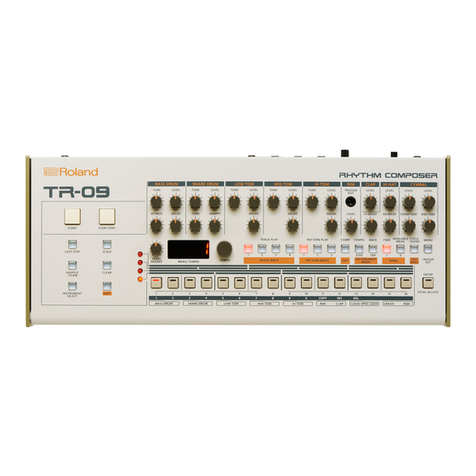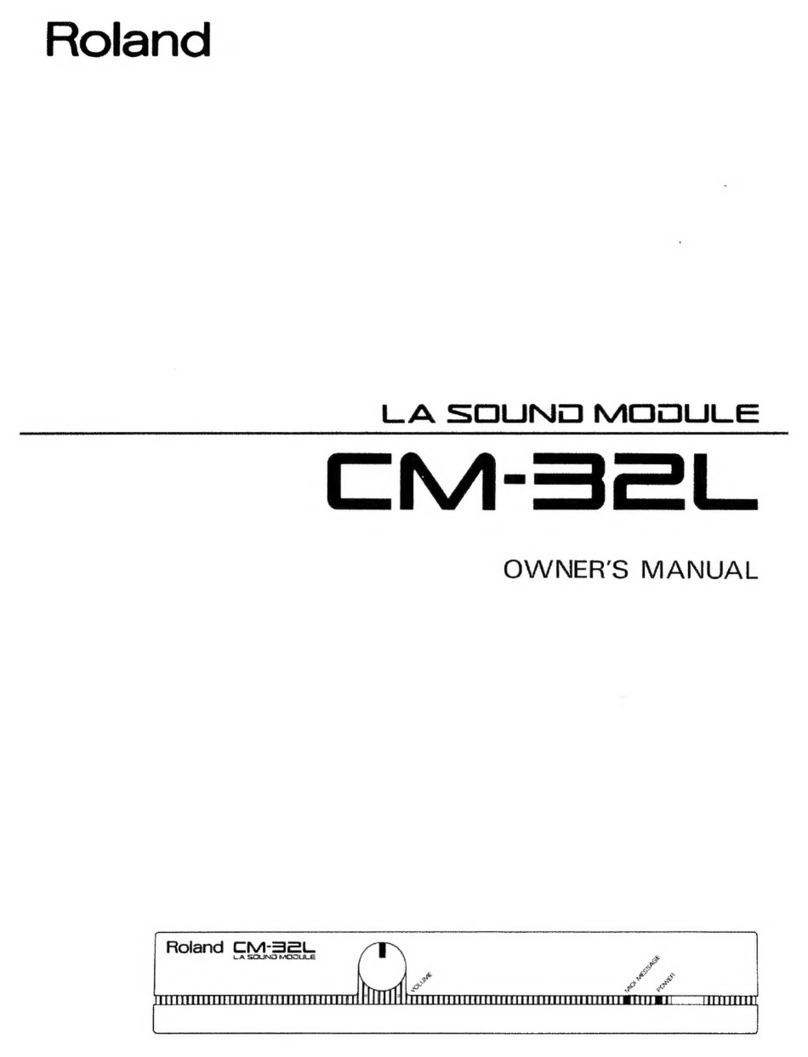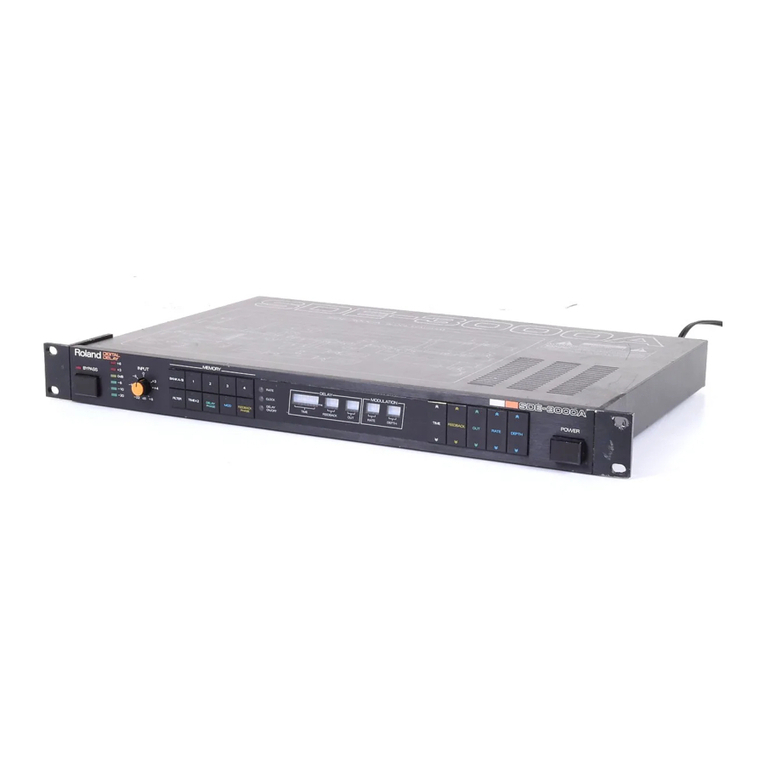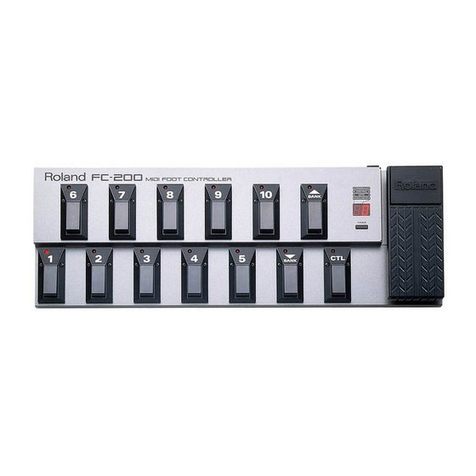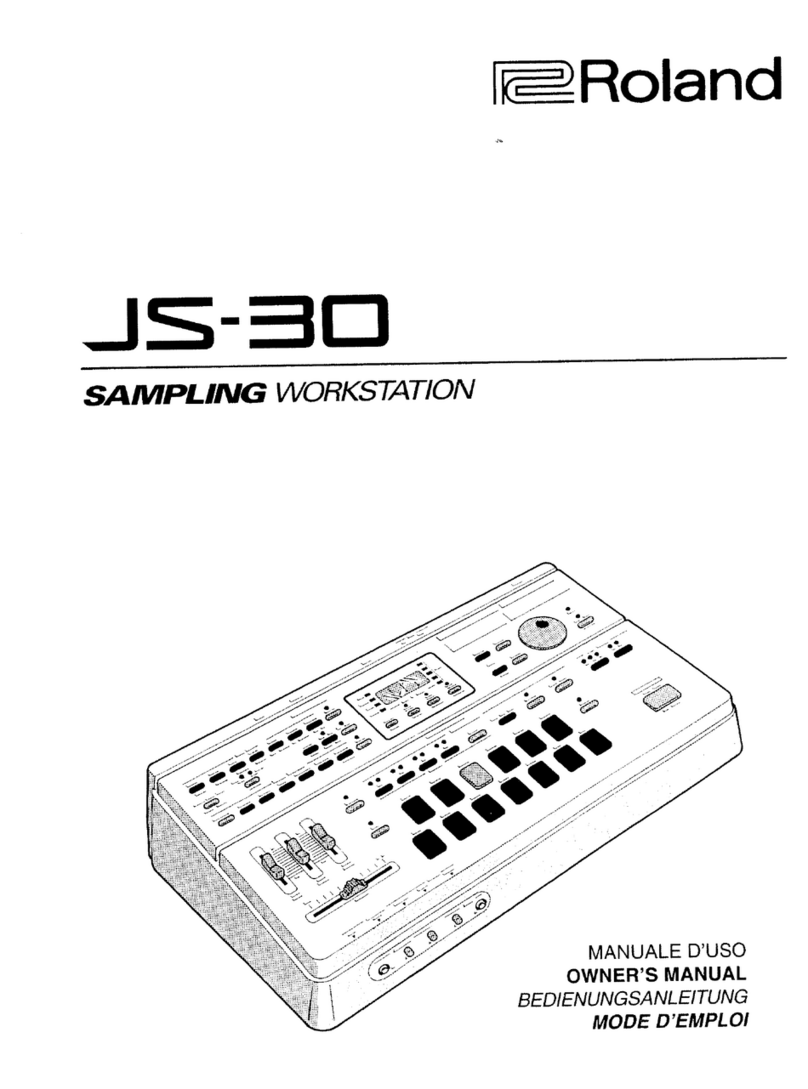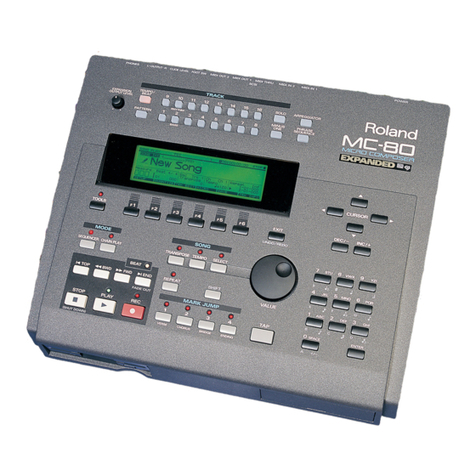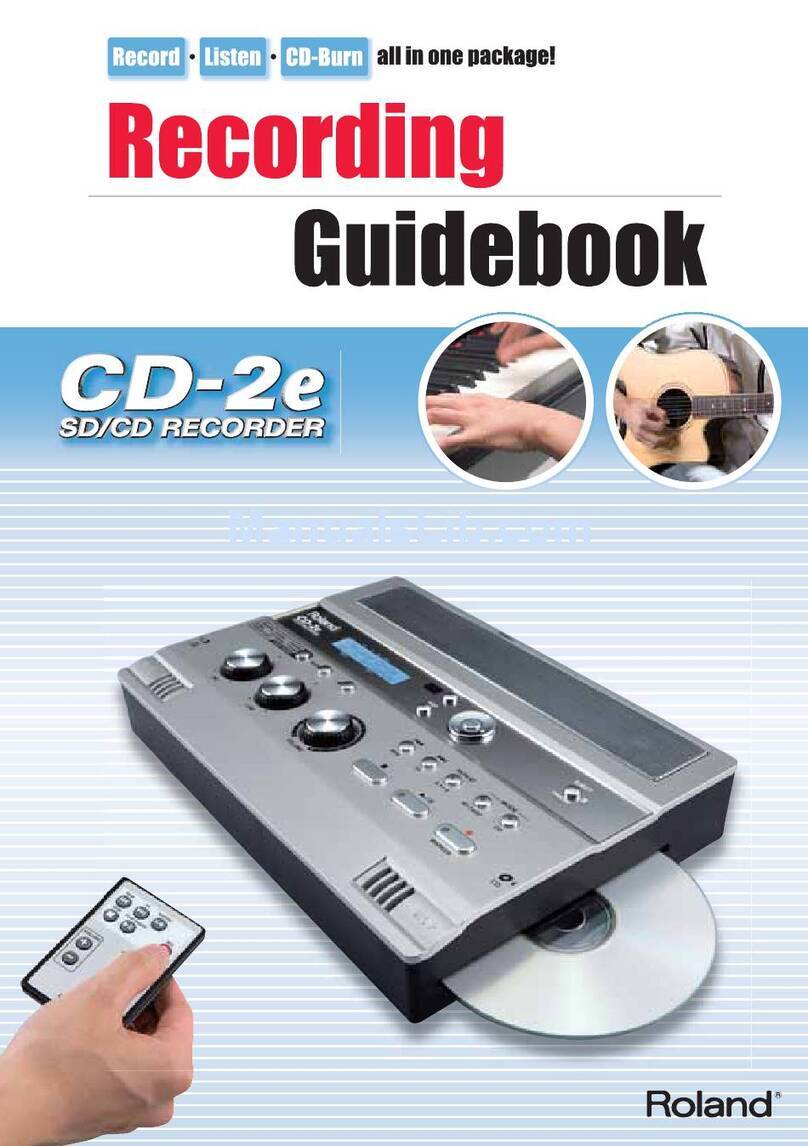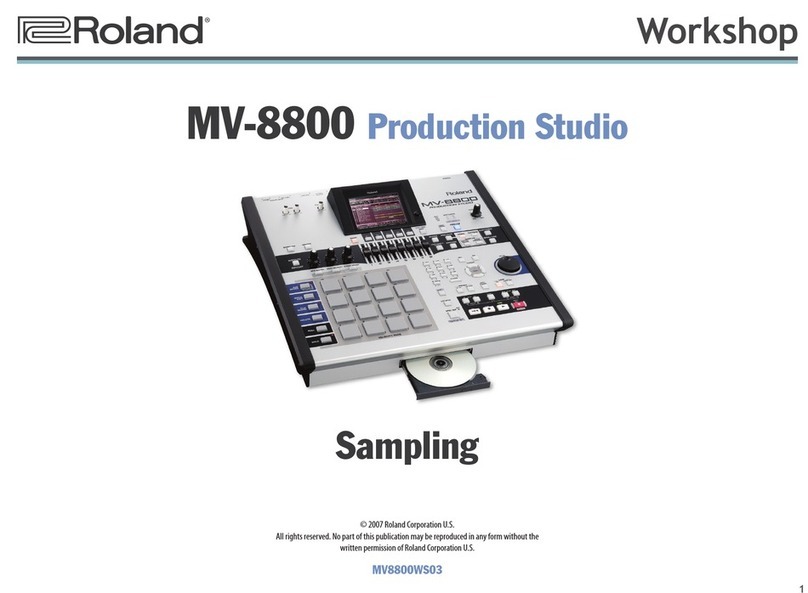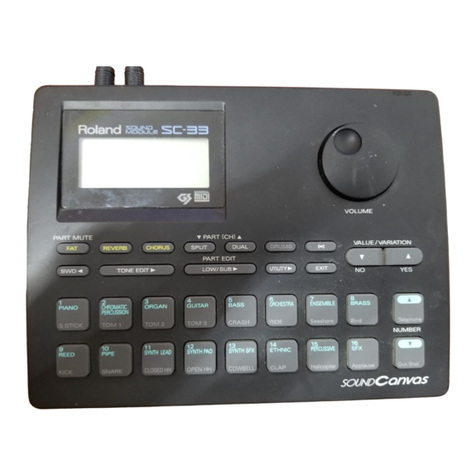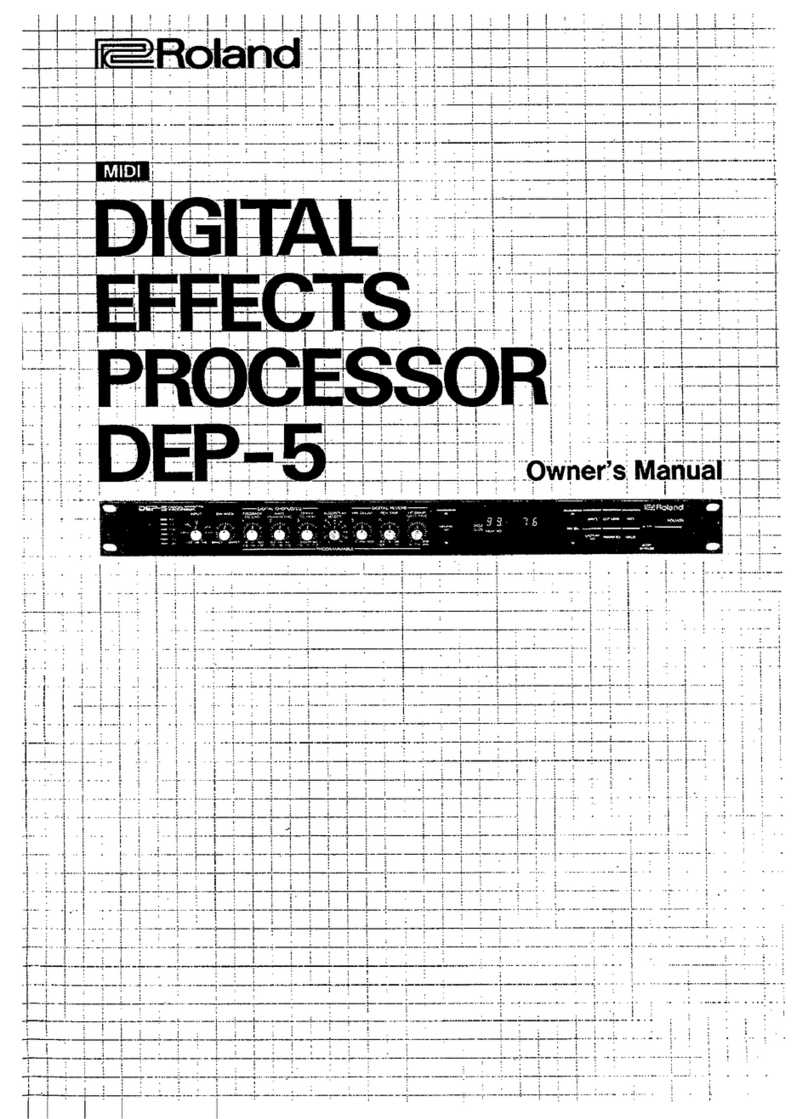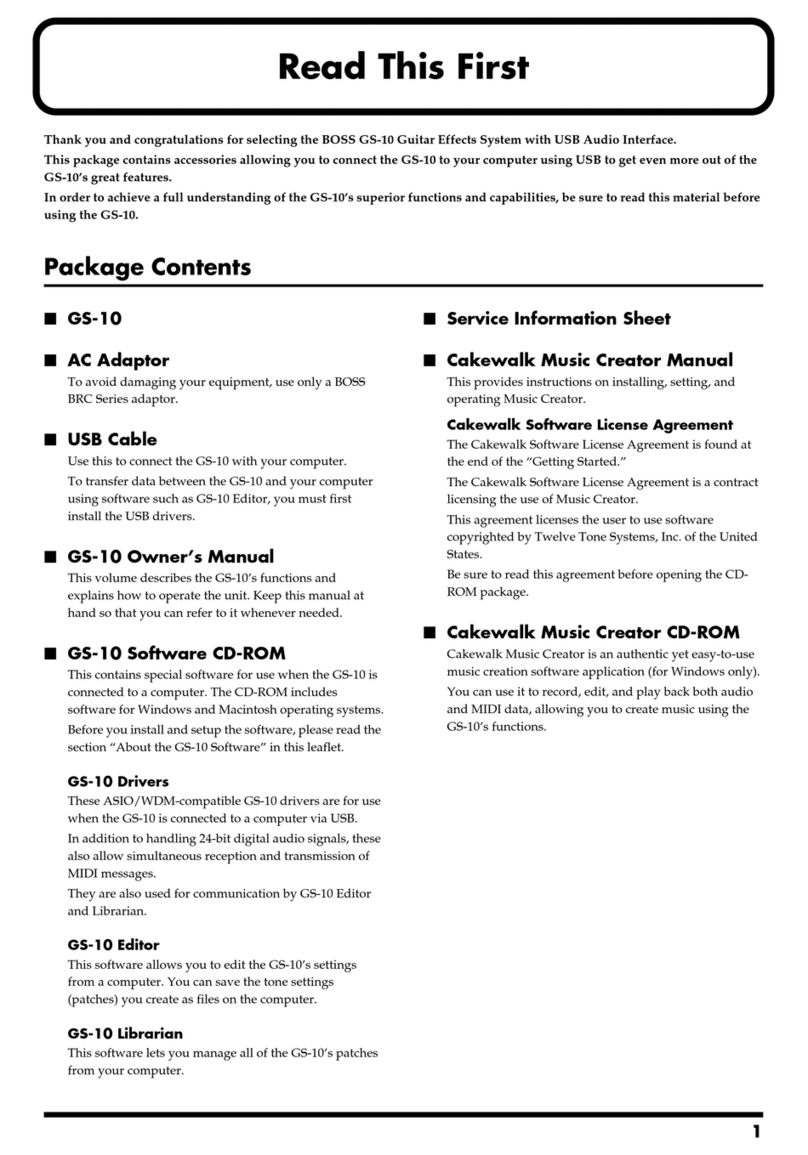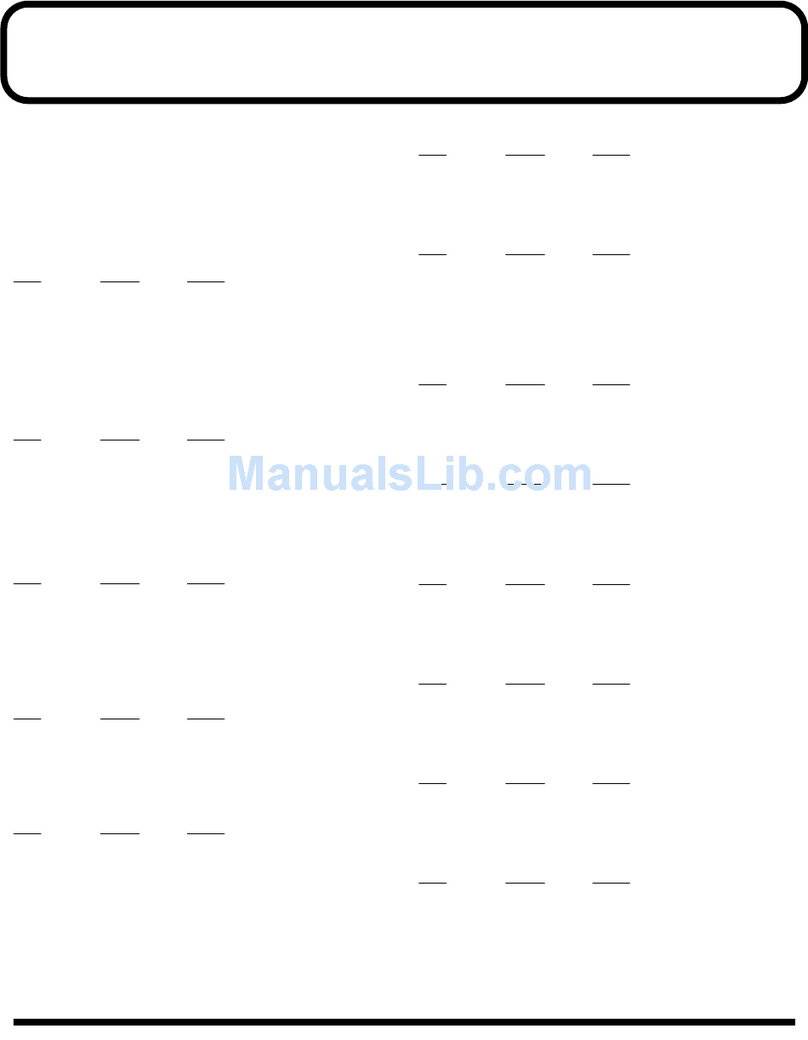TBS 238 ©2006 Roland Corporation U.S.
www.BOSSUS.com
Page 1
Welcome
Congratulations on your purchase of the Boss RC-50
Loop Station. This TurboStart contains step-by-step
instructions that will quickly introduce you to the
RC-50’s major features.
Auditioning Patches
A patch is a collection of phrases along with settings
that determine how they play. The RC-50 contains 99
patches. Patches 1-5 are Preset patches with pre-
recorded phrases you can play along with.
1. Choose how you want to listen to the RC-50:
• Connect headphones to the RC-50’s rear-
panel PHONES jack, or
• Connect the RC-50’s rear-panel MAIN
OUTPUT jacks to your amp or mixer, or for
mono listening, connect only the R(MONO)
MAIN OUTPUT jack.
2. Turn the PATCH/VALUE dial to select Patch 2,
FUNKY BLUES.
3. Press the PHRASE 1 pedal.
4. Press the REC/PLAY/OVERDUB pedal to play
the patch’s first phrase. Turn the MASTER
LEVEL knob to adjust the volume as desired.
5. Press the PHRASE 2 pedal. When Phrase 1
finishes playing, Phrase 2 begins to play.
6. Now press the PHRASE 3 pedal—when Phrase
2 finishes, Phrase 3 plays.
7. Once Phrase 3 has played through, it stops
automatically. If you’d like to stop playback
sooner, press the STOP pedal.
Recording a Phrase
The RC-50 contains two playback modes:
• Single Mode—lets you play back phrases one at
a time. This allows you to record three different
song sections (verse, chorus, and bridge, for
example) and play each section individually.
• Multi Mode—lets you play Phrases 1, 2 and/or 3
at the same time. You can record, for example, a
drum part in one phrase, a bass in another, a
guitar in the other, and then play them back
together in any combination, or by themselves.
Here’s how to record phrases in Single Mode:
1. Turn the MASTER LEVEL knob counter-
clockwise to turn down the master level.
2. Connect the output of your guitar, instrument, or
pedal rig to the RC-50’s rear-panel INST
R(MONO) and L jacks, or to the R(MONO)
INPUT jack if you want to record in mono.
3. Turn the PATCH/VALUE dial to select an unused
patch for recording. When you choose a patch,
the PHRASE 1 pedal’s indicator lights solidly
orange, and the indicators on the PHRASE 1
and REC/PLAY/OVERDUB pedals flash red.
4. Press the SINGLE/MULTI mode button
repeatedly until the indicators on the SINGLE/
MULTI and LOOP SYNC pedals aren’t lit.
5. Turn the INST (INPUT LEVEL) knob to adjust
your recording level.
6. Turn the MASTER LEVEL knob clockwise to
adjust your listening level.
7. Turn the GUIDE LEVEL knob until “Guide Level
OFF” appears in the display.
8. Step on the REC/PLAY/OVERDUB pedal to start
recording—the indicators on the PHRASE 1 and
RECORD/PLAY/OVERDUB pedals light red.
9. Perform the desired phrase.
10. When you’re finished, step on the REC/PLAY/
OVERDUB pedal to stop recording—the pedal’s
indicator changes to green and the phrase
you’ve recorded plays automatically. You can
adjust the volume of the phrase by turning the
PHRASE 1 LEVEL knob.
11. To add more material to Phrase 1, step on the
REC/PLAY/OVERDUB pedal again—its indicator
turns orange. This means the RC-50 is
overdubbing: recording new material without
erasing what you’ve already recorded.
12. To stop recording, step on the REC/PLAY/
OVERDUB pedal so its indicator is green—the
RC-50 plays your original recording and the
overdub together.
13. When you’re finished, press the STOP pedal.
14. To record Phrase 2 and Phrase 3, step on the
desired phrase pedal that you want to record to,
and then follow Steps 8-13 above.
Writing Patches into Memory
When you’ve recorded new phrases or made any
changes to a patch, you have to write them into the
RC-50’s memory to store them. Use the following
steps to store a patch:
1. Stop playback of all of the patch’s phrases, and
then press the WRITE button—“Write to”
appears in the display.
